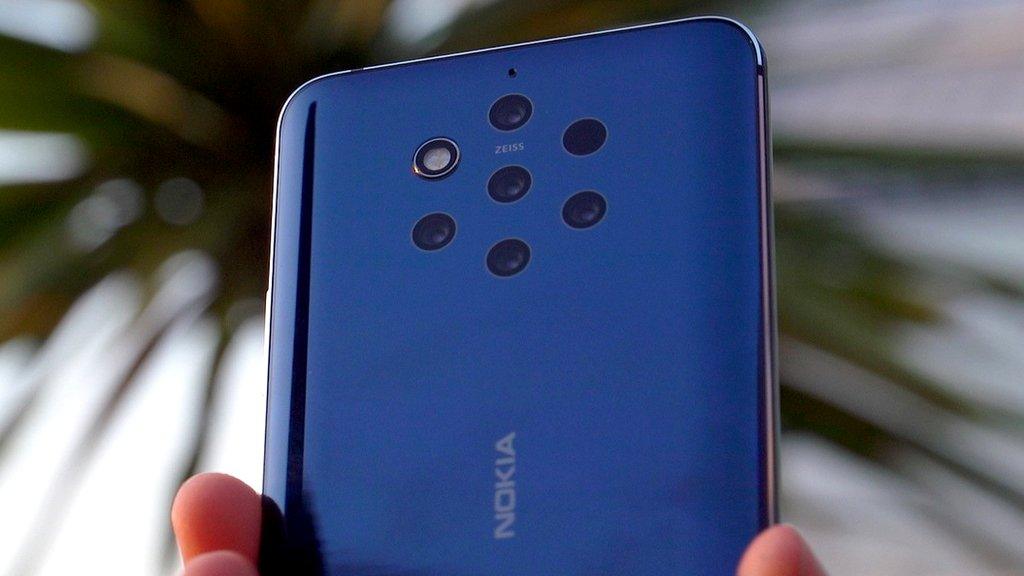Microsoft HoloLens 2 augmented reality headset unveiled
- Published

Microsoft believes HoloLens 2 offers new ways for surgeons to plan operations
Microsoft has a new version of its augmented reality headset, which now detects where its users are looking and tracks the movements of their hands.
It said that HoloLens 2 wearers, external would find it easier to touch and otherwise interact with graphics superimposed over their real-world views.
Other improvements include filling more of a user's view and automatically recognising who they are.
The firm is pitching the kit as being ready for use in business environments.
WATCH: Hands-on with HoloLens 2
Many experts believe mixing together graphics and real-world views has greater potential than virtual reality, which removes the user from their immediate environment.
But apart from the smartphone game Pokemon Go and Snapchat-style photo filters, augmented reality has yet to find mainstream appeal.
The previous version of HoloLens was mainly targeted at developers. A rival AR headset-maker - Magic Leap - similarly markets its gear to software developers and other early adopters.
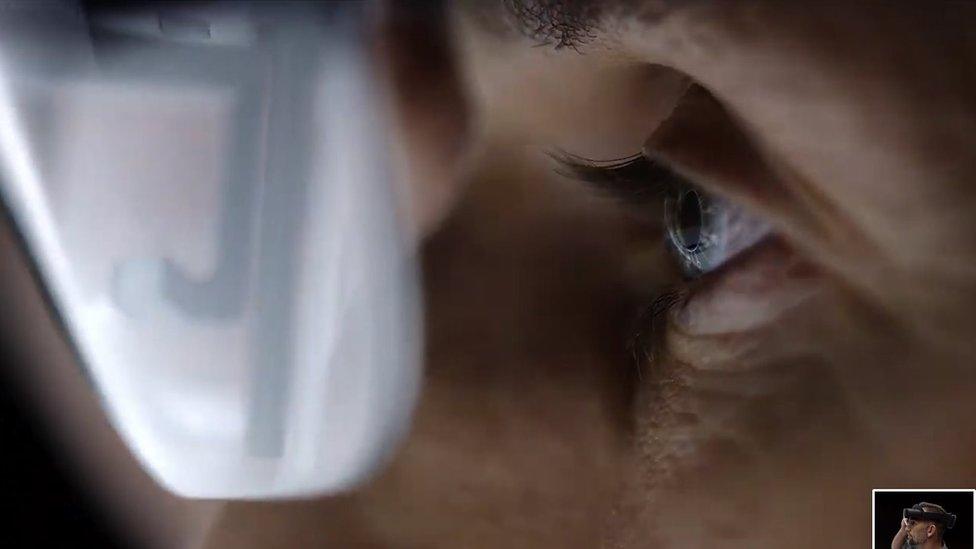
HoloLens 2 can now track user's eye movements to help it detect where they are looking
"Immersion, or persuading the wearer that they really are part of the scene they see in front of them, is important," commented Paul Miller from Forrester.
"The relatively narrow field-of-view for the first generation HoloLens made it difficult for wearers to suspend disbelief and accept that they were immersed in the environment before their eyes.
"With HoloLens 2, Microsoft has worked hard to improve both the resolution of the display and its field-of-view, resulting in a more immersive and believable experience."
The event was timed for the eve of the Mobile World Congress trade show.
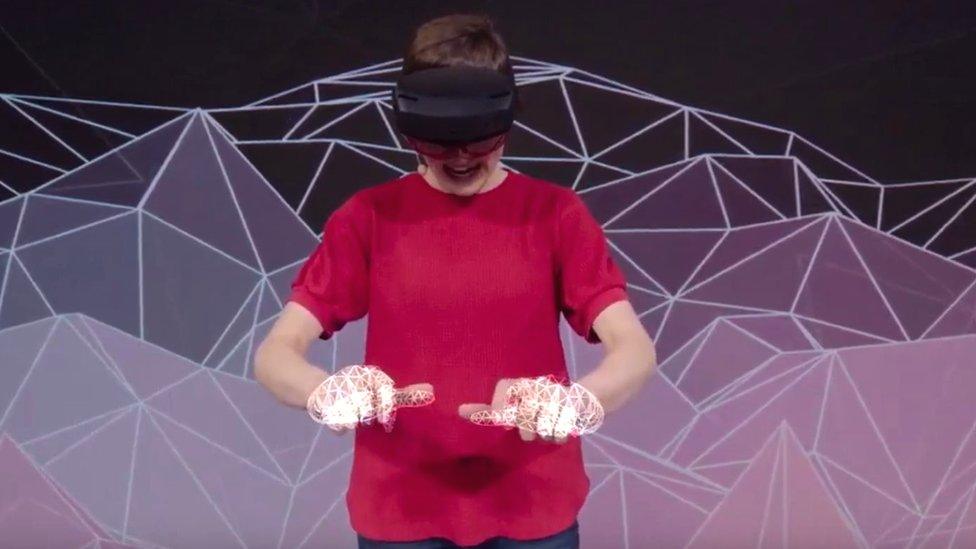
HoloLens 2 can now track the position of a user's hands and fingers making it easier for them to manipulate virtual objects
But it also followed the publication of a protest letter backed by dozens of its employees who oppose a deal to provide HoloLens technology to the US military.
"We did not sign up to develop weapons, and we demand a say in how our work is used," it said.
Comfier tech
Microsoft said that HoloLens 2 works in a "more human way" than the first version thanks to the changes it has made.

HoloLens 2 has had a price cut but is not being marketed to individuals
These include making the the field-of-view more than double that of its predecessor.
Many users had expressed disappointment at how small a window graphics had been contained to, meaning that their experience had fallen short of what Microsoft's promotional videos had suggested.
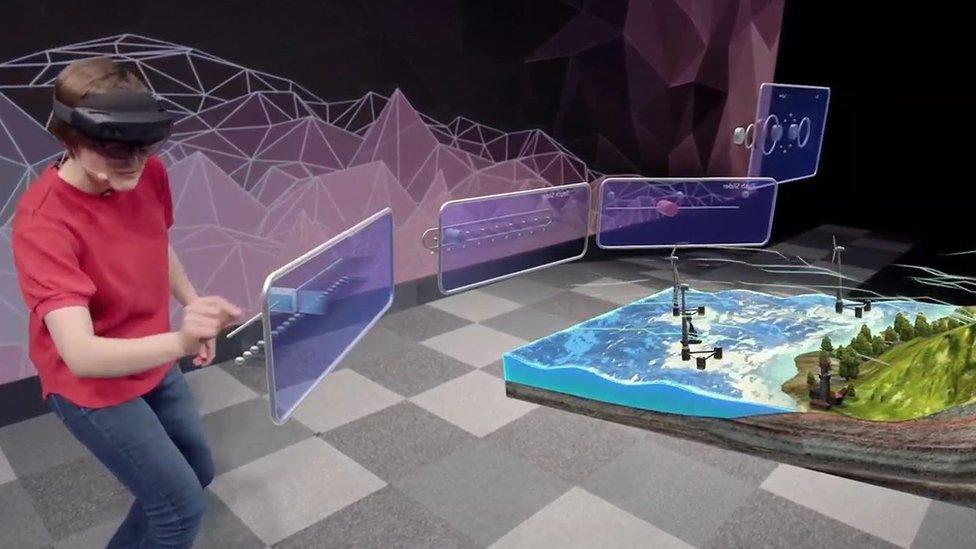
The headset's advanced tracking technologies let users push and press virtual controls
The firm said it had also improved the display's resolution, which it described as being the equivalent of moving from a 720p high-definition image to a 2K one for each eye.
This means that the shift to a larger view should not mean it has become more fuzzy.
Microsoft has also introduced iris recognition, allowing the machine to identify its wearer and automatically log them into their account.
The company also acknowledged that some users of the original version had found it uncomfortable to wear for lengthy periods. It said a revamped fitting system should mean the kit now felt as if it was "floating" on workers' heads.
Allow X content?
This article contains content provided by X. We ask for your permission before anything is loaded, as they may be using cookies and other technologies. You may want to read X’s cookie policy, external and privacy policy, external before accepting. To view this content choose ‘accept and continue’.
Companies will also have the option of having the device custom-fitted to their own gear, such as hard hats used on construction sites.
On-stage demonstrations of the headset included:
pressing individual notes on a virtual piano keyboard
pressing and moving virtual buttons and levers to make adjustments to a graphical landscape
interacting with another user - represented by an avatar - within a space where drawings and other material relevant to a project could be shared, stored and returned to while the work was ongoing
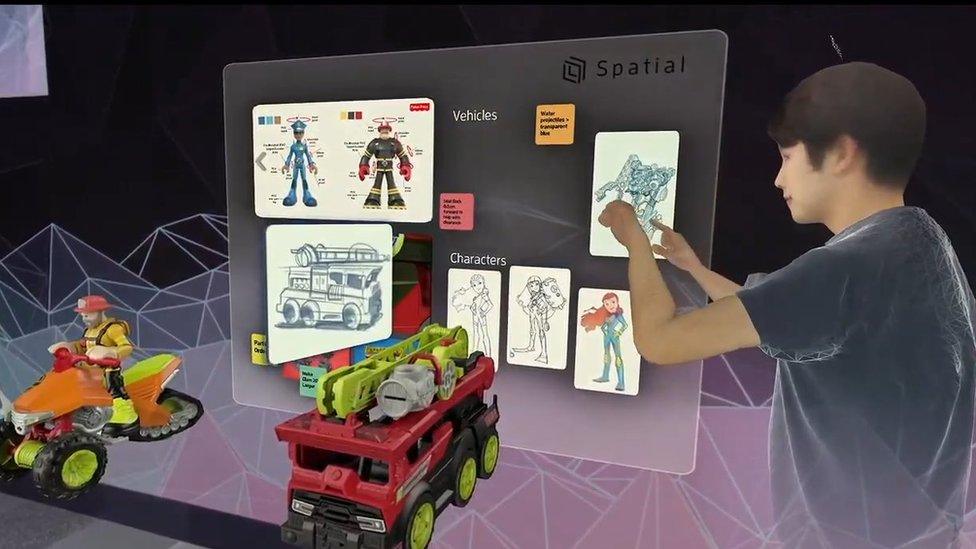
Workers collaborating on a project can set up a space they can share materials and see virtual representations of each other
"The jury is still firmly out on whether companies can be convinced to go all in on HoloLens, but if there is one company that can do it, it is probably Microsoft," commented Nick McQuire from CCS Insight.
"While improving the security and design will be major pluses, Microsoft will need to ensure there are durable and rugged models from partners for industrial applications and that it works well on a range of wi-fi signals for it to have mass appeal and overcome previous problems.
"In time, we would expect a 5G HoloLens model will arrive as well."
The Enterprise Edition of HoloLens 2 has been priced at $3,500 (£2,680), which represents a 30% reduction over the previous version.
Depth camera
Microsoft also unveiled a new version of its Kinect depth-sensing camera.
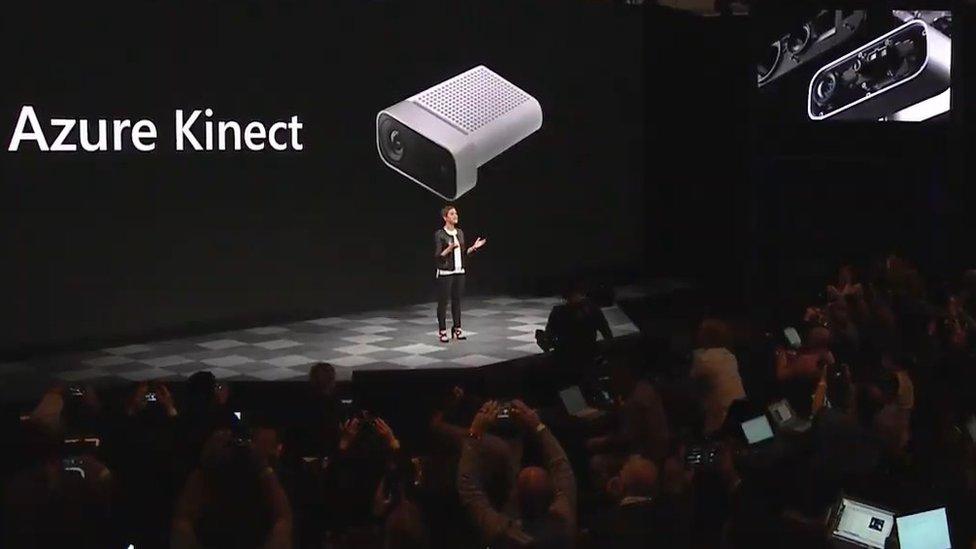
Microsoft has developed a new version of its Kinect camera that is targeted at professionals rather than gamers
Earlier releases were designed for its Xbox games consoles but were adapted for other uses.
The new 4K resolution edition is targeted at non-gaming uses such as detecting when patients have fallen out of a hospital bed or detecting problems on a factory assembly line.
Allow X content?
This article contains content provided by X. We ask for your permission before anything is loaded, as they may be using cookies and other technologies. You may want to read X’s cookie policy, external and privacy policy, external before accepting. To view this content choose ‘accept and continue’.
It will cost $399.
- Published25 February 2019
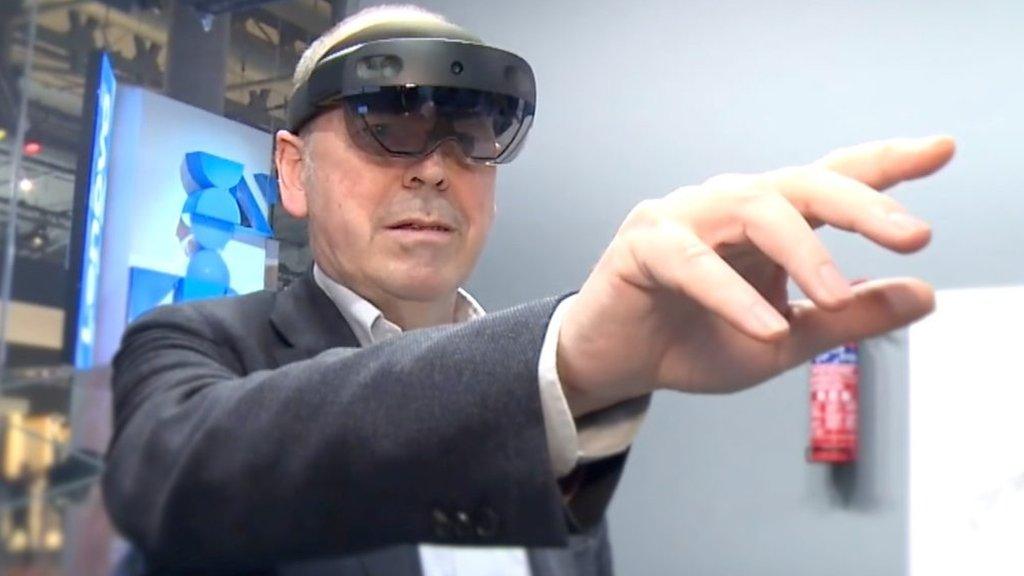
- Published22 February 2019
- Published24 February 2019
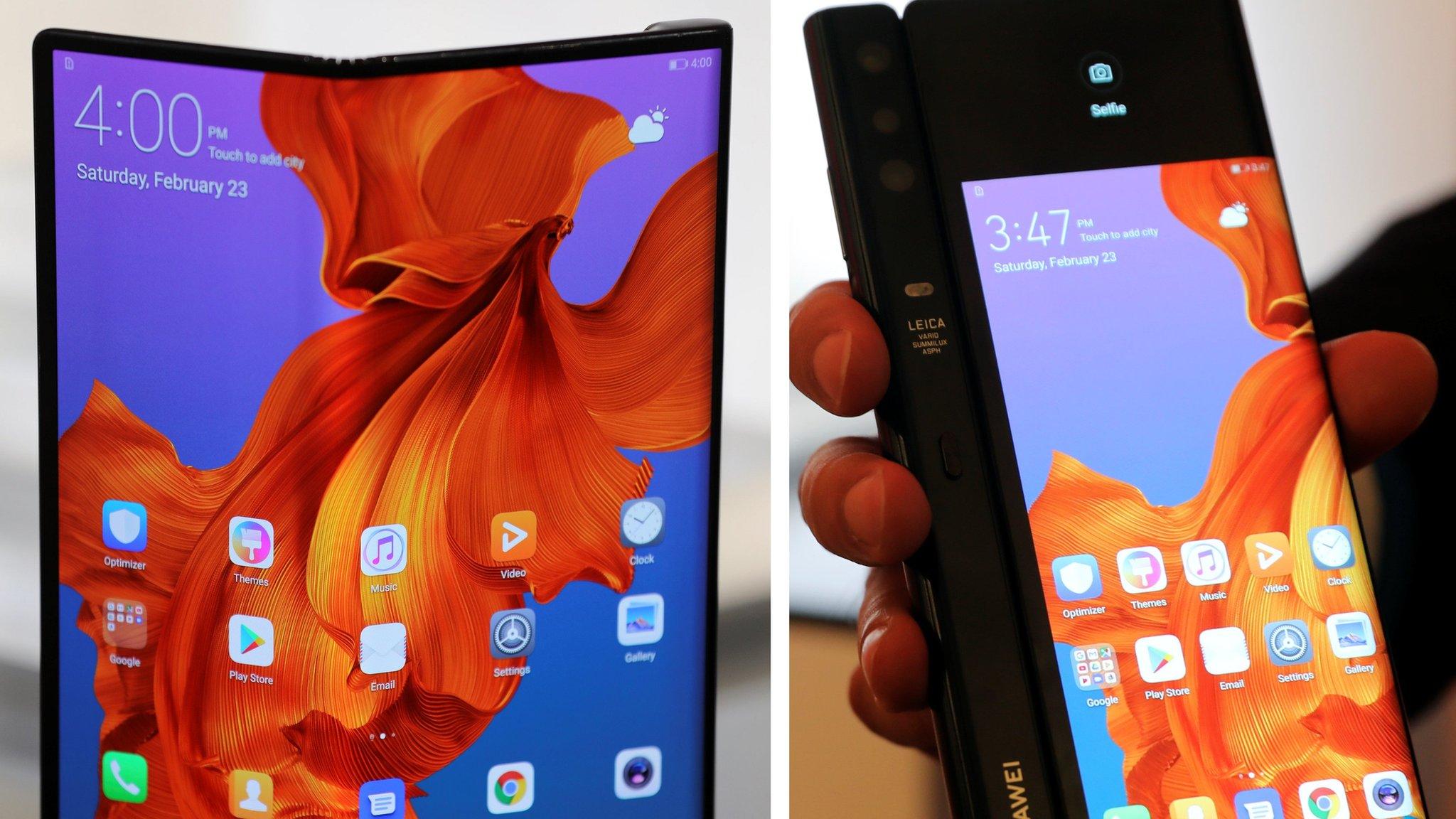
- Published24 February 2019
